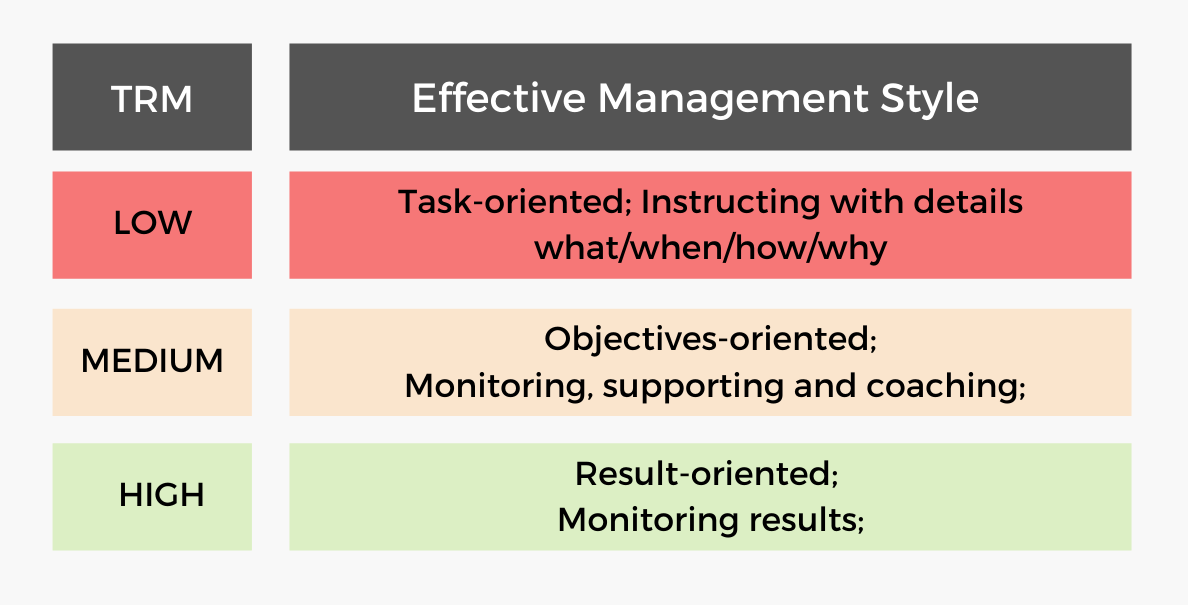Task Relevant Maturity (TRM) — The Search for Success
Here at Hostinger, we’re always looking for ways to improve our customer journey and work more efficiently as a team at the same time.
One of the ways of doing so is setting the Task Relevant Maturity framework. Let’s discuss how it helps us deliver better results and stay at the top of our game.
What Is Task Relevant Maturity?
Task Relevant Maturity (TRM) is a framework that determines how to delegate, monitor, and manage performance.
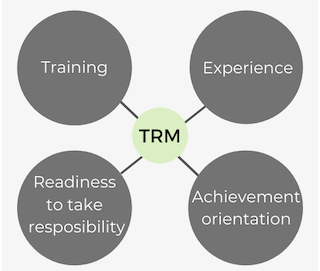
It was coined by Andy Grove in his book High Output Management. It’s a combination of training, experience, and readiness to take responsibility and achieve amazing results.
A person with high TRM must have a balance of both skill and will. If a person doesn’t find the sweet spot — TRM drops.
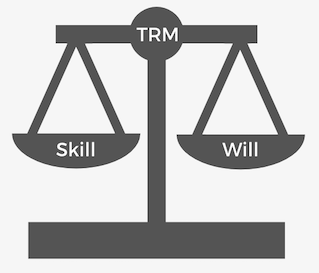
A combination of education, training, and experience falls under personal skills. Meanwhile, readiness and willingness to take responsibility, together with being achievement-oriented would fall under a person’s will.
Furthermore, TRM is not an absolute and generalized but a highly dynamic quality that ranges from task to task, even for the same individual.
One of the key principles covered in the book by Andy Grove is that “the output of a manager is the output of the organizational units under his or her supervision or influence.”
There are many ways a manager can influence his subordinates, such as leading by example, coaching, giving feedback, and training.Yet, the main question that comes up is how much supervision a manager should give to his team? And whether complete freedom or micromanagement is better in terms of productivity?
The general consensus is that micromanagement is heavily flawed, although, in the context of TRM, it really depends on individual scenarios.
TRM Pitfalls
- Defining TRM as trust. Giving employees new projects, new roles, and new responsibilities while maintaining the same level of involvement and coaching as they had before.
- Assuming that everyone has the same amount of context as you do. After delegating a task, leaving the person to dig his way out on his own.
- Promoting to management positions because of personal achievements. Such a person will have low TRM for leadership skills and will fail in a management role.
- Thinking that everybody should learn from their own mistakes. While it’s fine to fail and learn from your mistakes, a manager should always teach a subordinate as much as possible to prevent mistakes in the first place. Our customers shouldn’t pay for repeated mistakes.
Implementing the TRM Framework
It’s highly unlikely for employees to have high TRM at all times. This is especially the case in dynamic organizations, as personal TRM changes with every new task, role, or project. It is up to the manager to adjust their work by using the TRM framework.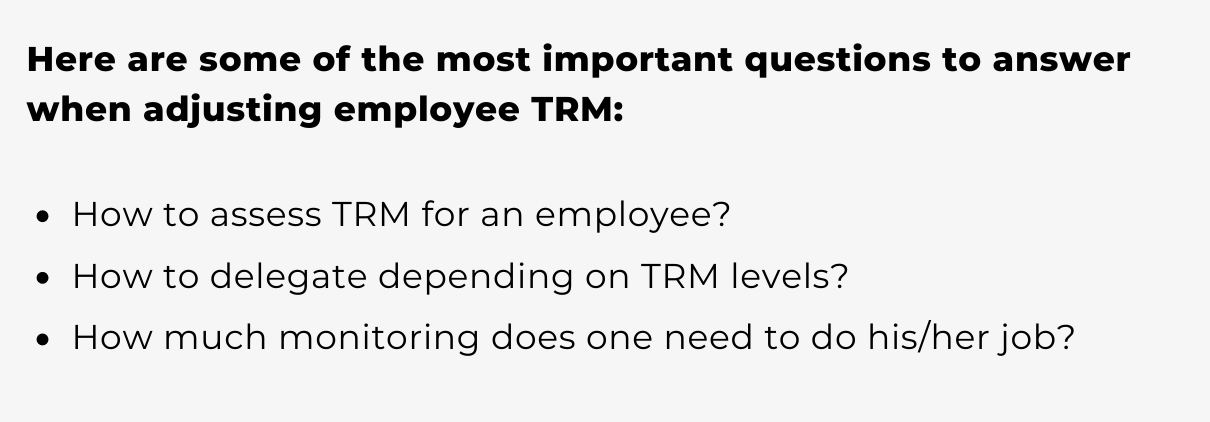
Assessing TRM
To assess TRM for a specific task, you’ll need to dedicate some time for yourself, especially at first. One of the most important key initiatives is to have frequent one-on-ones, at least once a week. The concept of one-on-ones is also extensively covered in Andy Grove’s book.
Don’t start these meetings by explaining the situation yourself, but ask your team member to explain the situation for you. Remember that the more they explain the Why behind what they’re doing or what they want to do, the faster you’ll understand their TRM level.
Ask the team member to create a plan of action and to provide reasoning for each step. If you make any corrections to the plan, after discussing it, ask the person to repeat the changes again, in their own words – this will ensure that you’re both on the same page.
Delegating Based on TRM
After assessing TRM, it should become clear when to delegate and when to keep the task for yourself or assign it to another team member.
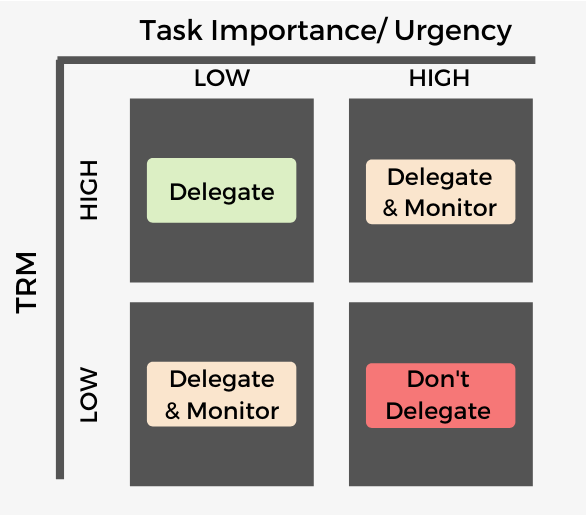
When a person has a high TRM, a manager can delegate more freely, focusing on higher leverage activities. If the task is very important or urgent, even though you’ve delegated the task, make sure the progress is going well by monitoring it from time to time.
Since the TRM framework is dynamic, it doesn’t always mean that people bearing low task-relevant maturity can’t do it on their own. If the task importance and urgency are low, you can delegate it safely.
It simply means that you’ll have to spend more time monitoring the progress of a said task. However, never delegate tasks that are highly important and are very urgent to a low TRM person – it is a one-way ticket to costly mistakes.
Management Style Based on TRM
“How often you monitor should not be based on what you believe your subordinate can do in general, but on his experience with a specific task and his prior performance with it” — Andy Grove.
Your management style should also be adapted to TRM. When you give a new task or role, where a person might lack experience, you should give that person a lot of attention.
One-on-one meetings should be scheduled at least every one to two weeks, with minor updates in between those meetings.
No matter how busy your schedule is, this is the time, when a person needs extensive and very structured coaching with clear instructions and knowledge that you can share if your subordinate needs to ask.
As TRM improves over time, you should reduce the intensity of monitoring. That way, these types of meetings will become less instructed and more objective-oriented with check-ins every three to four weeks.